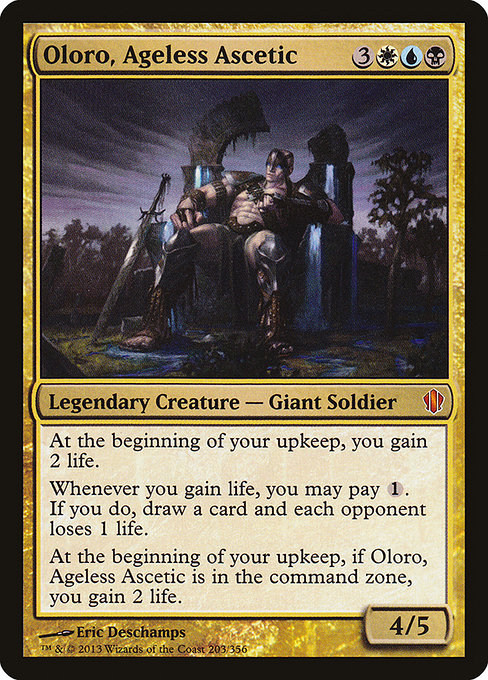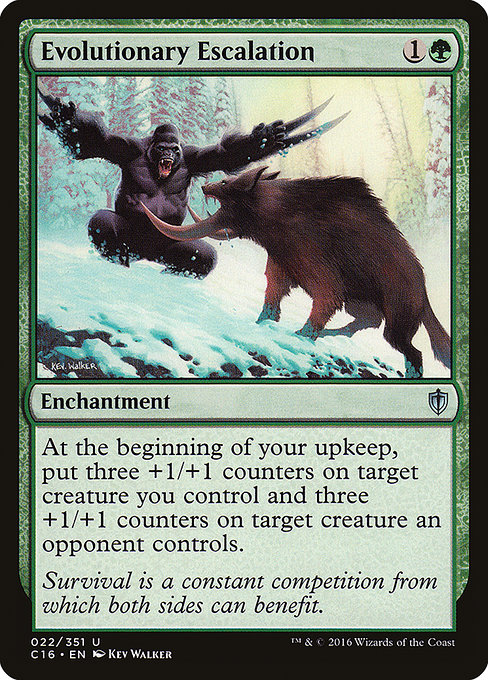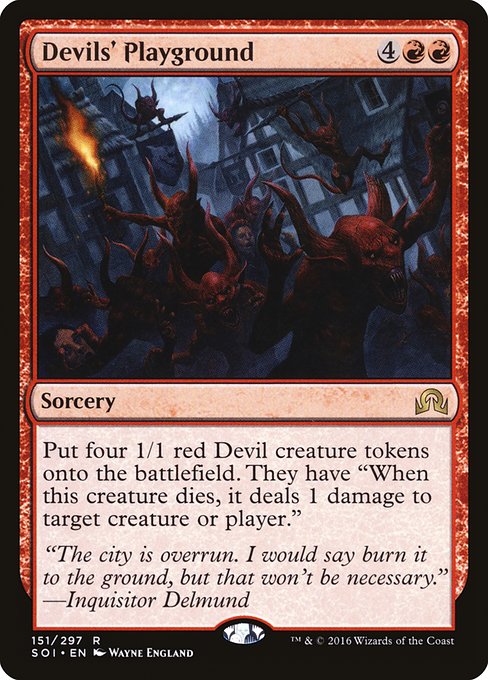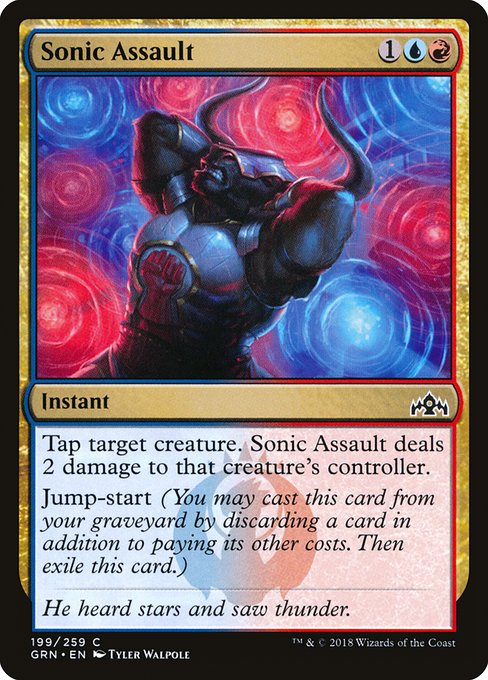Hello everyone. I’m Luka “Robot” Sharaska, and today we’re having a discussion about an interesting phenomenon becoming more common as time goes on. You’ve read the title, so you already know where this is going. I think single-target removal spells are getting much worse in casual Commander. Welcome back to the Commander Corner.

Let’s Do the Time Warp Again
To start, I think it’s important to talk about the history of the format just a bit. I’ll use this opportunity to talk about a cool anecdote. The first Commander product I ever purchased was the Oloro, Ageless Ascetic precon from the Commander 2013 series of decks for $8 USD, thanks to a pricing error at a massive retail chain. This deck has only a handful of removal spells, including Reckless Spite, but it does feature several sweepers like Toxic Deluge, Nevinyrral’s Disk, and Famine.
Aside from the commander, which was a relatively expensive threat that only really had the protection of Swiftfoot Boots in the decklist, the threat density was fairly low. Card draw was limited, creatures were meant to primarily attack and block, and games were mostly about pushing through lethal damage with your top-end. As a result, single-target spot removal was generally pretty good, in spite of Oloro’s eminence ability.
This trend would continue for a while in Commander, with spot-removal always having decent targets out of each command zone and most decks having a few key threats worth destroying. Like many trends, however, this wouldn’t last forever. Although there’s not a specific set or year when it happened, there’s been a demonstrable shift in power level at the casual level. To explain this change, I’d like to talk about the ways that players interact with sealed, preconstructed Commander decks. Then, I talk about how this Commander 2013 deck stacks up against modern-day Commander products.

Victim of Changes
Generally speaking, when someone who had a Commander playgroup purchased a Commander 2013 preconstructed deck, they would be inclined to switch out the lower-power cards in the deck for cards that are stronger. This process of replacing cards was and is rather fittingly called upgrading, and there’s videos from tons of content creators on how to upgrade almost every Commander deck ever printed.
Upgrading precons as a fundamental step in playing Commander at the casual level. It is one of those things to get more and more popular as time went on. Now we think of it as ubiquitous. After all, if you buy a precon, there’s sure to be a few durdle-y, weak, or otherwise situational cards, right? Well, WotC eventually got the memo that decks had a lot of chaff shoved in there, and what happened? Evolution.
If you were to take a preconstructed deck from the last year or so of Commander product releases and duke it out against the Commander 2013 Oloro, Ageless Ascetic deck, you’d find the newer deck is probably significantly more powerful on almost every axis. Commanders are cheaper, gameplans are more streamlined, and individual card selections are stronger.
To put this into perspective, Tower Gargoyle is a creature featured in Oloro’s deck. For the trouble of costing three different types of mana, all you get is a 4/4 with flying and the artifact card type, which is relevant in the deck. By comparison, March of the Machine’s Bright-Palm, Soul Awakener deck has maybe two creatures that don’t overtly reference +1/+1 counters and work alongside the commander in some capacity. It’s not even a competition.
It’s also obvious that Commander products, including sets designed exclusively for Commander, are exceedingly common these days. This has inflated the power level of most decks even higher. While I’m not trying to send us back to the stone age in service of some obscure spirit of the game, I do think it’s helpful to recognize that the power level of Commander tends to only ever increase.

Fuel
I don’t expect every preconstructed Commander deck in the future will have a list full of cards that seem to work perfectly in tandem with the creature or planeswalker at the helm, but I’m sure many of them will. So there it is. The power level of the average deck has gone up despite the same tendency to upgrade decks being present across the format, which in turn makes decks even stronger.
Single-target removal spells, by their very nature as one-for-one trades, have always occupied a very specific niche within the Commander format. On one hand, it’s quite valuable to have a way to answer a key threat your opponents play, but on the other hand you essentially give the other two players the distinct advantage of not having one less card in their hand. Some decks handle this better than others.
You would be right to believe that removal has gotten more flexible across the years since the genesis of the Commander format. Although cards like Path to Exile, Swords to Plowshares, and Terror have been around for many years, it took some time for cards like Abrupt Decay, Vraska’s Contempt, Hero’s Downfall, and others across almost every color, to make their appearance.
You might believe that an increase in power level means players are more likely to draw additional cards, and therefore the inherent risk of card disadvantage in a game of Commander is somewhat lessened. Yes, that is the case. However, the increase in power level does not escalate in the same way that the risk of removal spells decreases. In short, more powerful decks don’t see diminishing returns, and spot removal spells always will. This brings me to my next point.

Sympathy for the Devil
Commander tables, by and large, agree with my sentiments above. The cards that make spot removal and board-wipes worse have dramatically increased in cost and rates of play, not just because of limited availability or because of competitive EDH (cEDH) players, but because the cards themselves are demonstrably, objectively good in almost any game of Commander.
While Flawless Maneuver and Deflecting Swat might be the most currently noteworthy examples of this, you might remember Teferi’s Protection, which still carries a $20+ price tag despite having five different printings. This is a trend in the direction of more proactive game plans and away from more reactive game plans, which is another push towards higher power levels.
Most removal spells only ever do one thing, they remove your opponents threats. Unfortunately, the cards that make removal weaker often do many things at once. Ever played Ravenous Chupacabra? How about Invasion of Lorwyn? Fiend Hunter? Perhaps Invasion of New Capenna? These are obliterated by Nimble Obstructionist, which also has the benefit of countering planeswalker activations, saying no to Aetherflux Reservoir, and stifling Annihilator triggers from cards like Ulamog, the Infinite Gyre.
Flawless Maneuver stops your removal spell, but it also makes combat a nightmare and most board sweepers a non-issue. Deflecting Swat makes your Vindicate much worse, but it also enables aggressive combo strategies with the promise of a free counter. Tamiyo’s Safekeeping, Surge of Salvation, Heroic Intervention, and the list goes on. This is to say nothing of cards like Lightning Greaves, Swiftfoot Boots, or even the recently printed Winged Boots. Even amateur players deep-diving into Commander might quickly realize that one answer to removal is to just play a higher density of powerful cards to make yourself less removal-prone.

Live and Learn
I’d like to slow things down a bit and say that it’s not all doom and gloom. Games being higher power isn’t necessarily a net loss for Magic, it’s just a change in how the game tends to function at the casual level. I’ve had fun in battlecruiser-style games where combat damage was the only win condition, but I’ve also had fun casting Expropriate on turn four at higher power tables, and I’ve had fun grinding out victory with Thrasios, Triton Hero in cEDH as well. Even if spot removal is getting worse, that doesn’t mean you shouldn’t play it or that it’s inherently bad in Commander.
It’s simply not as good as it used to be.
Magic is, at its core, a game about adapting to changing game states and metagames. Playing the same deck to the same results in perpetuity is not only counter to the goals of WotC, but also counter to half of the fun of Commander’s variance. What you should do, instead of cutting your Infernal Grasp, is to adapt your gameplay accordingly. Maybe for you that means crafting a more finely-tuned deck which is less reactive and dependent on removal to keep itself in the game. Perhaps it means you play more card draw to compensate for the cards you’ll be spending on threats from your opponents. It could even mean you run an extra sweeper like Damnation or Wrath of God over a somewhat restrictive removal spell like Go for the Throat.
Thanks For Coming
I know this is different than most of the Commander Corner entries you might be used to, and I’m really thankful you’ve read this far. I also know a lot of people probably already understood this in their heads, but some folks probably didn’t and too few people have said it out loud. There’s a lot of other things to talk about in relation to this subject, be we’ll save that for another week some time down the road. The more I dig into the Commander format, the more I enjoy it, and with WotC devoting more time and effort to it every set, I doubt it’s going anywhere. I’ve been Luka “Robot” Sharaska, and I’ll see you next week in the Commander Corner.
[Luka V. Sharaska (they/them) earned the nickname “Robot” by having a monotone voice, a talent for calculating odds, and a perfect poker face. Robot has been playing Magic for more than a decade, starting during the days of New Phyrexia in 2011.]

